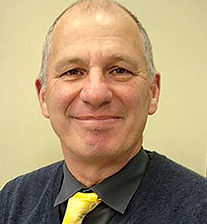Search

 Ashburton College community services committee members Brittany Fowler, Ann Moriarty and William Hii get some practice in before the Ashburton College community services day. Photo Jaime Pitt-MacKayAshburton College’s youngest students will be giving back to the community next week when they take part in the college’s community services day next Wednesday.
Ashburton College community services committee members Brittany Fowler, Ann Moriarty and William Hii get some practice in before the Ashburton College community services day. Photo Jaime Pitt-MacKayAshburton College’s youngest students will be giving back to the community next week when they take part in the college’s community services day next Wednesday.
The day has been launched by the college’s new community services committee which is headed by William Hii.
“We want to give something back to our community through actually getting out there and rolling up our sleeves,” he said.
More than 250 Year 9 students will take part in the day, supported by about 50 staff from Ashburton College, and volunteers from Safer Ashburton and Volunteering Mid and South Canterbury.
The activities will range from weeding, planting and landscaping in areas such as the Harris Reserve, Wakanui Beach, Argyle Park and an emergency and community organisations car wash.
It is hoped the day will become a regular on the Ashburton College calendar, alongside other initiatives the committee started this year.
These initiatives include regular visits to the Terrace View Retirement Village and assisting the Ashburton Youth Council with events such as the Bite Nite.
By Jaime Pitt-MacKay © The Ashburton Guardian - 21 November 2018
 Ross PreeceAshburton College’s Year 12 student numbers might be dropping, but they’re dropping for all the right reasons, says principal Ross Preece.
Ross PreeceAshburton College’s Year 12 student numbers might be dropping, but they’re dropping for all the right reasons, says principal Ross Preece.
The school year had been marked by a steady outflow of Year 12 students who had gained level 2 NCEA and who had managed to secure jobs, he said.
Those were students who had no intention of returning for level three and were actively in the job market.
And the good news for those students was that they were finding meaningful employment.
Most who left for employment did so from August on, but a few had achieved level two and found jobs as early as the end of term one, Preece said.
“There seem to be heaps of jobs around. Every day in our notices there are job offers – we had three really good jobs on one day last week – and there’s good competition for those jobs among students and it’s good to see there’s also competition among employers for good employees.”
Preece said he was pleased with the way employers were coming to the college looking for students.
“They’re cottoning on to the idea that the best place to come for employees is to schools.”
The school was also being proactive in working with students to find work opportunities, he said, because every young person who gained a job in the district was a young person kept in the community. It was also part of the college’s drive to keep every young person in education, training, or in work, he said.
The growth in Year 12 students keen to move into the workforce was part of a growing trend where young people were becoming less willing to take on debt or huge student loans.
“They recognise you can make a really good living with a trade. If you’re bright and capable you don’t necessarily need to go to uni and get a big student loan.”
By Sue Newman © The Ashburton Guardian - 17 November 2018
 Ross PreeceOne year down the track, Ashburton College principal Ross Preece is hailing the school’s innovative Kohanga programme for Year 9 and 10 students as a major success.
Ross PreeceOne year down the track, Ashburton College principal Ross Preece is hailing the school’s innovative Kohanga programme for Year 9 and 10 students as a major success.
Kohanga (the nest) was established to meet the needs of a small number of Year 9 and 10 students who struggled to meet the learning and social needs of the secondary school system.
Preece said the Kohanga system allowed those students to spend most of their class time in one room with one teacher and some impressive outcomes were being achieved.
The objective was to keep the students engaged in learning and if possible have them return to mainstream education.
For several, by Year 10 about 50 per cent of their subjects were now taken as part of a mainstream class, he said.
“The great thing to see is these kids are attending class regularly and to know they’re well supported.”
The Advance Ashburton Foundation had been a huge help in staffing Kohanga, paying 50 per cent of the teacher’s salary and providing $10,000 for learning resources, Preece said.
For the students involved, Kohanga was about more than learning, it was also about seeing that the system was prepared to put time and effort into their learning, he said.
“If you give these students nothing, then they’ll become youth crime statistics in five years’ time.
Success could be measured in seeing all of last year’s Year 9 students move on to Year 10 and the Year 10 students staying engaged in education into Year 11.
Some who were school leaving age moved on to the YMCA classes and that meant they were still in education, Preece said.
By Sue Newman © The Ashburton Guardian - 16 November 2018


